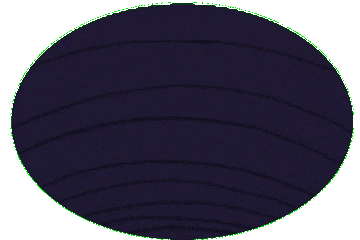The Velvet Underground
The Velvet Underground was an American rock band formed in New York City in 1964. The New York Times wrote that the Velvet Underground was "arguably the most influential American rock band of our time". Though their integration of rock and the avant-garde earned them little commercial success during their initial nine-year run, they are now widely regarded as one of the most influential bands in rock music, as well as underground, experimental, and alternative music. Their provocative subject matter and experimentation were instrumental in the development of punk rock, new wave and other genres. The group performed under several names before settling on the Velvet Underground in 1965, taken from the title of a 1963 book on atypical sexual behavior. Its classic lineup consisted of singer and guitarist Lou Reed, Welsh multi-instrumentalist John Cale, guitarist Sterling Morrison, and percussionist Moe Tucker. In 1966, pop artist Andy Warhol became their official manager. They served as the house band at Warhol's studio, The Factory, and performed with his traveling multimedia show, Exploding Plastic Inevitable, from 1966 to 1967. Their debut album, The Velvet Underground & Nico, featuring the German singer and model Nico, was released in 1967 to critical indifference and poor sales, although it has since been hailed as one of the greatest albums in music history. The band released their second album, the abrasive White Light/White Heat, in 1968, after which Cale was replaced with Doug Yule. They then released two more accessible albums, The Velvet Underground (1969) and Loaded (1970), but neither performed to the expectations of record labels or de facto group leader Reed. In the early 1970s, all but Yule left the band for various reasons. A final album was released under the Velvet Underground name in 1973, Squeeze, recorded mostly by Yule with Ian Paice of Deep Purple and other session musicians in London. The Velvet Underground dissolved shortly after. The former band members collaborated on each other's solo work throughout the 1970s and 1980s, and an album of long lost recordings of original songs, VU, was released in 1985. Reed, Cale, Tucker and Morrison reunited for a series of well-received shows in 1993, and released a live album from the tour, Live MCMXCIII, later that year. After Morrison's death in 1995, the remaining members performed at their Rock And Roll Hall of Fame induction in 1996. In 2004, the Velvet Underground were ranked number 19 on Rolling Stone's list of the "100 Greatest Artists of All Time". Following Reed's death in 2013, the group received the Grammy Lifetime Achievement Award in 2017.
This article uses material from the Wikipedia article "The Velvet Underground", which is released under the Creative Commons Attribution-Share-Alike License 3.0.
Connection Chains
- From Sleep Late My Lady Friend to The Velvet Underground in 13 Steps
- From Loop de Loop to The Velvet Underground in 9 Steps
- From This Could Be the Night to The Velvet Underground in 8 Steps
- From One to The Velvet Underground in 8 Steps
- From Unichappell Music to The Velvet Underground in 8 Steps
- From Harry / Nilsson Sings Newman to The Velvet Underground in 7 Steps
- From Let's Put Harry in the Hall L A Recording Session to The Velvet Underground in 7 Steps
- From Together to The Velvet Underground in 7 Steps
- From Vicky Leandros to The Velvet Underground in 7 Steps
- From Jack Jones to The Velvet Underground in 7 Steps
- From Al Kooper to The Velvet Underground in 7 Steps
- From Clodagh Rodgers to The Velvet Underground in 6 Steps
- From Roger Smith to The Velvet Underground in 6 Steps
- From Without Her to The Velvet Underground in 6 Steps
- From January 21 to The Velvet Underground in 6 Steps
- From March 5 to The Velvet Underground in 5 Steps
- From Telly Savalas to The Velvet Underground in 5 Steps
- From Jeff Garlin to The Velvet Underground in 4 Steps
- From Pancho Villa to The Velvet Underground in 4 Steps
- From June 5 to The Velvet Underground in 3 Steps
- From June 14 to The Velvet Underground in 3 Steps
- From Laurie Anderson to The Velvet Underground in 2 Steps
- From Steve Hunter to The Velvet Underground in 2 Steps
- From March 2 to The Velvet Underground in 2 Steps
Connections
- Lou Reed was a member of The Velvet Underground







![The Velvet Undergrou - Velvet Underground And Nico [Near Mint Vinyl LP] 180 Gram The Velvet Undergrou - Velvet Underground And Nico [Near Mint Vinyl LP] 180 Gram](https://i.ebayimg.com/images/g/n40AAeSwIl9pOVhL/s-l225.jpg)




